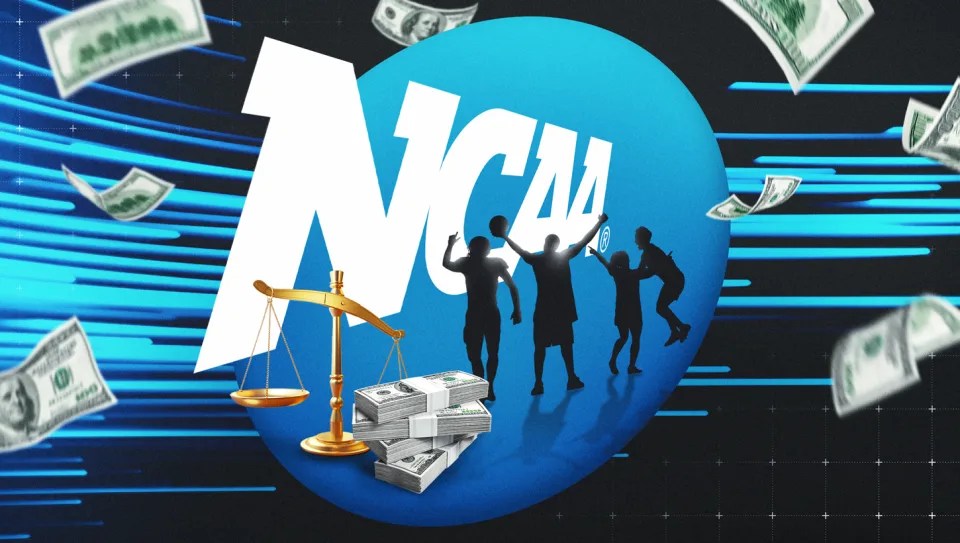The recent approval of the NCAA’s significant settlement marks a profound shift in the landscape of college athletics. After years of legal battles over athlete compensation, this groundbreaking agreement now enables schools to pay athletes directly, ushering in a new era of college sports. The spotlight on this development shines brightly, as it not only promises financial equity for athletes but also enhances the overall integrity of collegiate programs.
As the details of this historic settlement emerge, a clearer picture of its implications comes into focus. Schools that choose to embrace this new system—primarily Division I institutions—can begin sharing up to a specified amount of revenue with their athletes starting July 1. For the inaugural year, the revenue-sharing cap is projected to be an astounding $20.5 million, with expectations that this figure will rise in subsequent years.
One of the most significant aspects of this new model is the establishment of a non-NCAA governing body, the College Sports Commission, tasked with enforcing revenue-sharing regulations. Alongside it, a dedicated clearinghouse managed by Deloitte, known as “NIL Go,” will scrutinize contracts made between athletes and external parties, such as brands or sponsors. This dual structure aims to create a transparent and accountable system that prioritizes the athletes’ rights and compensations—an evolution that has been long overdue.
Another notable element of the settlement is the commitment to compensate thousands of former athletes. The NCAA will pay out a staggering $2.8 billion in backpay to those who participated from 2016 to 2024, addressing grievances related to lost Name, Image, and Likeness (NIL) compensation. This acknowledgment of past injustices demonstrates a critical step towards fairness in college athletics, offering much-needed restitution to former players who were sidelined financially.
Amid this groundbreaking change, the settlement also introduces a revision of roster management rules. The traditional practice of enforcing scholarship limits will be transformed into roster limits, allowing schools to ‘grandfather’ in current athletes, those who might have been cut due to new regulations, and recruits who relied on the promise of roster opportunities. This could potentially help maintain team stability while navigating the new financial landscape.
Delving into the financial mechanisms behind this initiative, the revenue-sharing cap is determined by calculating 22% of the average revenues generated by select power schools. Prominent sources of income—such as ticket sales, sponsorships, and television rights—contribute to this foundation. While the initial cap distribution will likely assume a skew toward football and men’s basketball—dominant revenue-generating sports—this provides an opportunity for equitable financial sharing across various athletic programs in the future.
Furthermore, the settlement outlines a gradual escalation of the revenue-sharing cap, with built-in increases planned for the second and third years, and reevaluations scheduled every three years. Such assurances are intended not only to protect current athletes but also to prepare future generations of college athletes for advertised financial opportunities.
Looking forward, this settlement serves as a stepping stone toward stabilization and potential legislative protection for the NCAA and its member schools. As lawmakers work toward drafting a federal bill to safeguard these guidelines, the collaboration among collegiate leaders and legislators represents a pivotal moment in the evolution of college sports. It is a crucial period that may well define the next chapter of how sports are organized and financed at the collegiate level.
In summary, the NCAA’s landmark settlement signifies a new era of college sports—one that prioritizes the rights and compensations of athletes, and reflects a growing acknowledgment of their contributions to athletic programs. With direct payments, revenue sharing, and comprehensive oversight finally in place, a newfound sense of equity emerges, promising a more just system for current and future athletes.
As we stand at this intersection of opportunity and change, it’s clear that the future of collegiate athletics is not only brighter but more equitable, marking a transformative moment for student-athletes across the nation as they now step onto the field of play—not just as competitors, but as valued beneficiaries of their hard work and dedication.
Source link










